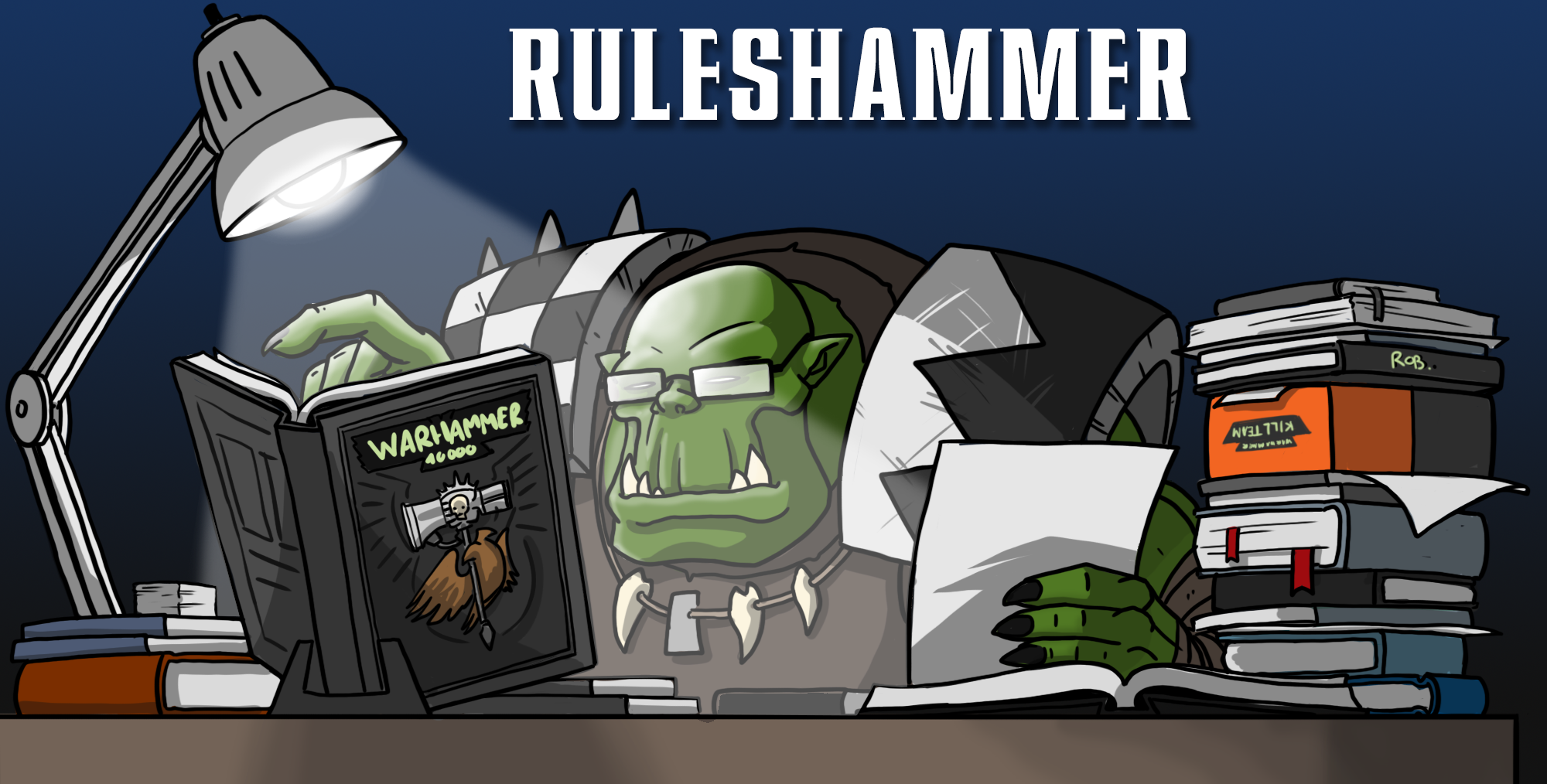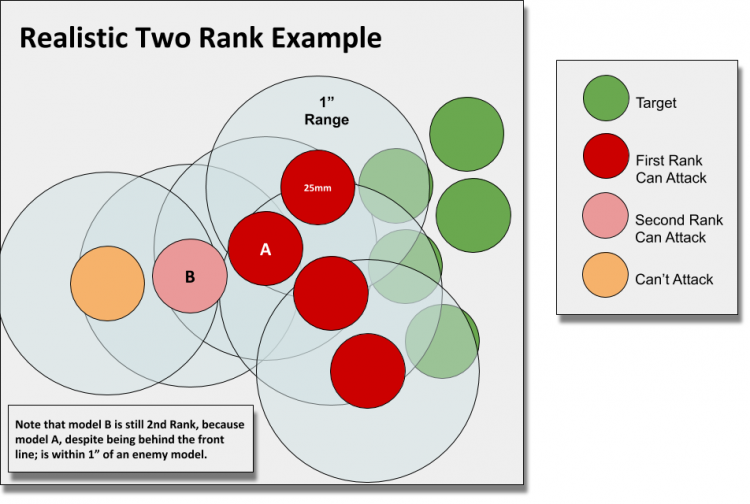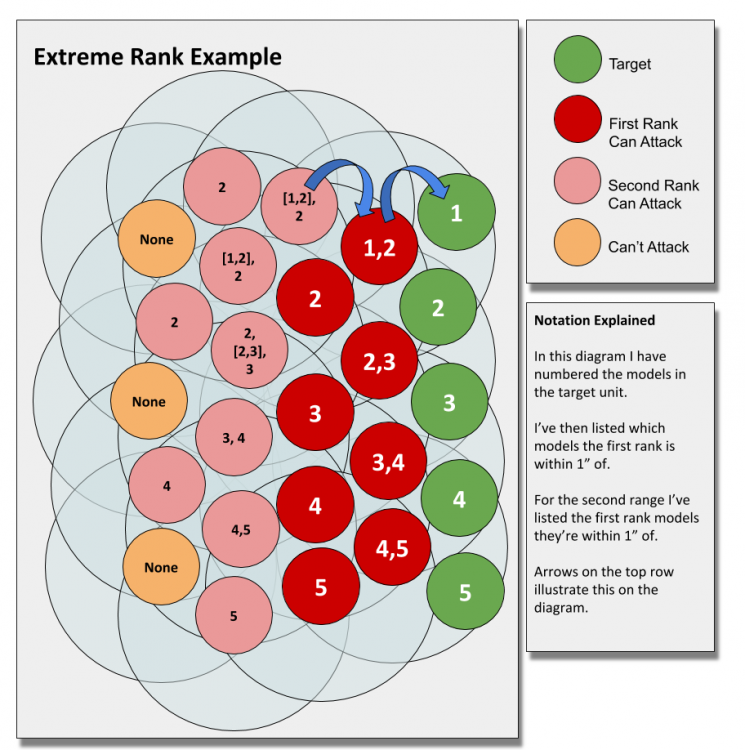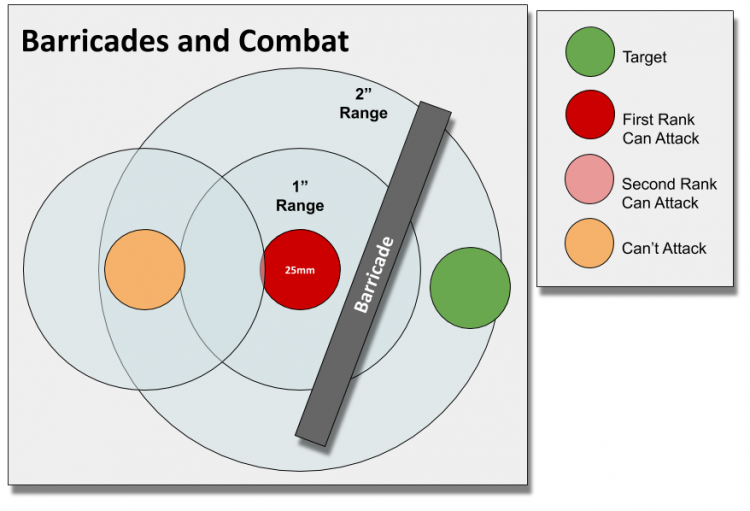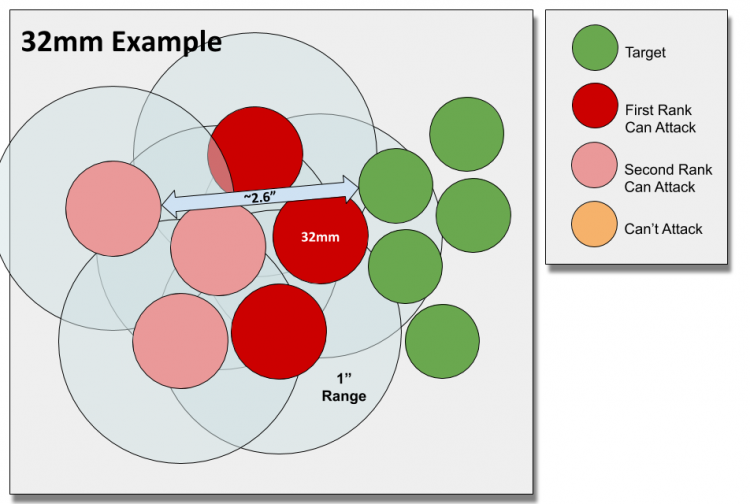Although we love Warhammer 40,000, the game’s complexity can be daunting, particularly for newer players. In Ruleshammer, we look at the nuances of the game’s rules and how they affect gameplay, clearing up potential issues and helping make sense of some of the game’s less common interactions. In today’s Ruleshammer, Rob “Vre’kais” Chilton is looking at the Fight phase of Warhammer 40,000 and how to determine which models can fight.
The Core Rules in Question
From the Warhammer 40,000 Core Rulebook:
“To target an enemy unit, the attacking model must either be within 1″ of that unit, or within 1″ of another model from its own unit that is itself within 1″ of that enemy unit. This represents the unit fighting in two ranks. Models that charged this turn can only target enemy units that they charged in the previous phase.”
So this creates two conditions for being in combat:
-
A model is within 1″ of an enemy model.
OR
-
A model is within 1″ of a friendly model that is within 1″ of an enemy model
How does this work in practice though?
This scenario is far more realistic and would better reflect model placement after the “Pile In” move has been completed. In this example 5 models would be able able to attack. Some would argue that this isn’t the intention of the combat range rule, so lets check.
What do the FAQs have to say?
Below is the FAQ concerning the “two ranks” rule. Many players have taken this sentence to indicate a limit rather than provide clarification:
Q: In the Fight phase rules, under Choose Targets, the third sentence states ‘This represents the unit fighting in two ranks’. Does this mean I should only fight in two ranks even if I can physically fit more than that (such as with 28mm and 32mm bases), or is this just an abstract description of what this rule does?A: This was intended to be an illustrative piece of text, creating an image of how models further back would fight. It was not intended to limit the actual number of models that are able to fight. The number of models that can fight is described in the first and second sentence.
This makes it quite clear that more than 2 ranks are allowed but what are the extremes a player can push this to?
Models Often Extend Over Their Bases
Lots of 25mm models have parts that extend off the edges of their bases, combat experts like Genestealers are far larger than the 25mm base the come with (although Genestealers from standalone games are on 32mm, bear that in mind). Actually managing to get these models to pack in so perfectly is not really possible for a lot of these models, not with their bases flat to the board (which they have to be). Note: This is more about how diagrams are always just an abstraction of reality, technically there’s no rule against a horde of Genestealers managing to tessellate perfectly as above. It would just take more time to do that than most players would expend attempting it, because of their awkward size.
The Effects of Terrain and Scenery
This example entirely ignores the existence of terrain, and further demonstrates how important terrain is to any game. Barricades for example do not change the second condition, they just change the first;
When a unit charges a unit on the opposite side of a barricade, the charge is successful if the charging unit can end the move within 2″ of the target unit instead of 1″. In the Fight phase, units on opposite ides of a barricade can be chosen to fight with and can make their attacks if there is an enemy unit within 2″ instead of 1″.
In this scenario the Red and Orange models have charged at the Green’s position behind the barricade, and this is their position after piling in (unrealistic I know, but it’s a hypothetical). To be able to fight in combat the model needs to either be:
-
Within 2″ of an enemy model (the extra range is thanks to the Barricade terrain rules), or
-
Within 1″ of a friendly model that is within 1″ of an enemy model – the Barricade rule doesn’t alter this condition.
The red model has reached their target, and the Orange model is within 1″ of red but because Red isn’t within 1″ of the enemy they don’t meet the second condition, and would be unable to target the enemy unit in the Fight phase. In a more realistic situation this would more likely be their pre-Pile In move state, and the 3″ Pile In move would be enough to get both into combat. There would still be no second rank however unless one of the front rank models was within 1″. Side note: As we noted in our review of Chapter Approved 2019, Barricades have the interesting effect of reducing the necessary distance for charges that occur after a “Deep Strike”: While you still have to deploy your models more than 9″ away, the charge succeeds if you can end your Charge move within 2″ of the enemy model, reducing the required roll to 8″ before any modifiers. Maybe don’t hug Barricades too closely with this in mind.
What about larger bases?
The rules for getting into combat are actually rather forgiving for larger base. Despite being roughly 2.6″ away from the target unit, that rear most model would still be eligible to attack. This leads however to the last question this blog will cover;
Q. What if the opponent removes the models from their front rank, do I need to slow roll everything?
The short answer is: No. Here’s why again from the core rules:
Any unit that charged or has models within 1″ of an enemy unit can be chosen to fight in the Fight phase.
The checks for “Who Can Fight?” range happen when you select a unit to attack with, not when you select a model (this is the same for shooting, and it’s why removing models can’t prevent a model from firing twice for rapid fire or other similar range-based rules). So to clarify this whole section a little:
-
Select a unit to fight with. This unit needs to have at least 1 model within 1″ of the enemy to be selected, or it has to have charged this turn.
- Make your Pile In moves.
-
Determine which are the eligible models that are in combat range.
-
If those models are able to attack more than one enemy unit, declare the targets and weapons being used against each of the enemy units.
-
Make attacks as usual.
- Make your Consolidate moves.
I hope this article has helped to explain some of finer detail of the combat range rules. Have a question or want to discuss these rules? Join the Discussion on Reddit Here or drop a note in the comments below if you have any questions or feel I’ve made any mistakes, or email us at contact@goonhammer.com. I’ll try to reply or maybe your question will inspire a future article.
References
40k Rulebook FAQ
https://www.warhammer-community.com/wp-content/uploads/2019/09/30ead283.pdf 40k Core Rules
https://whc-cdn.games-workshop.com/wp-content/uploads/2019/01/Warhammer-40k-Battle-Primer-English-3.pdf Chapter Approved 2019
https://www.games-workshop.com/en-GB/Chapter-Approved-2019-EN
